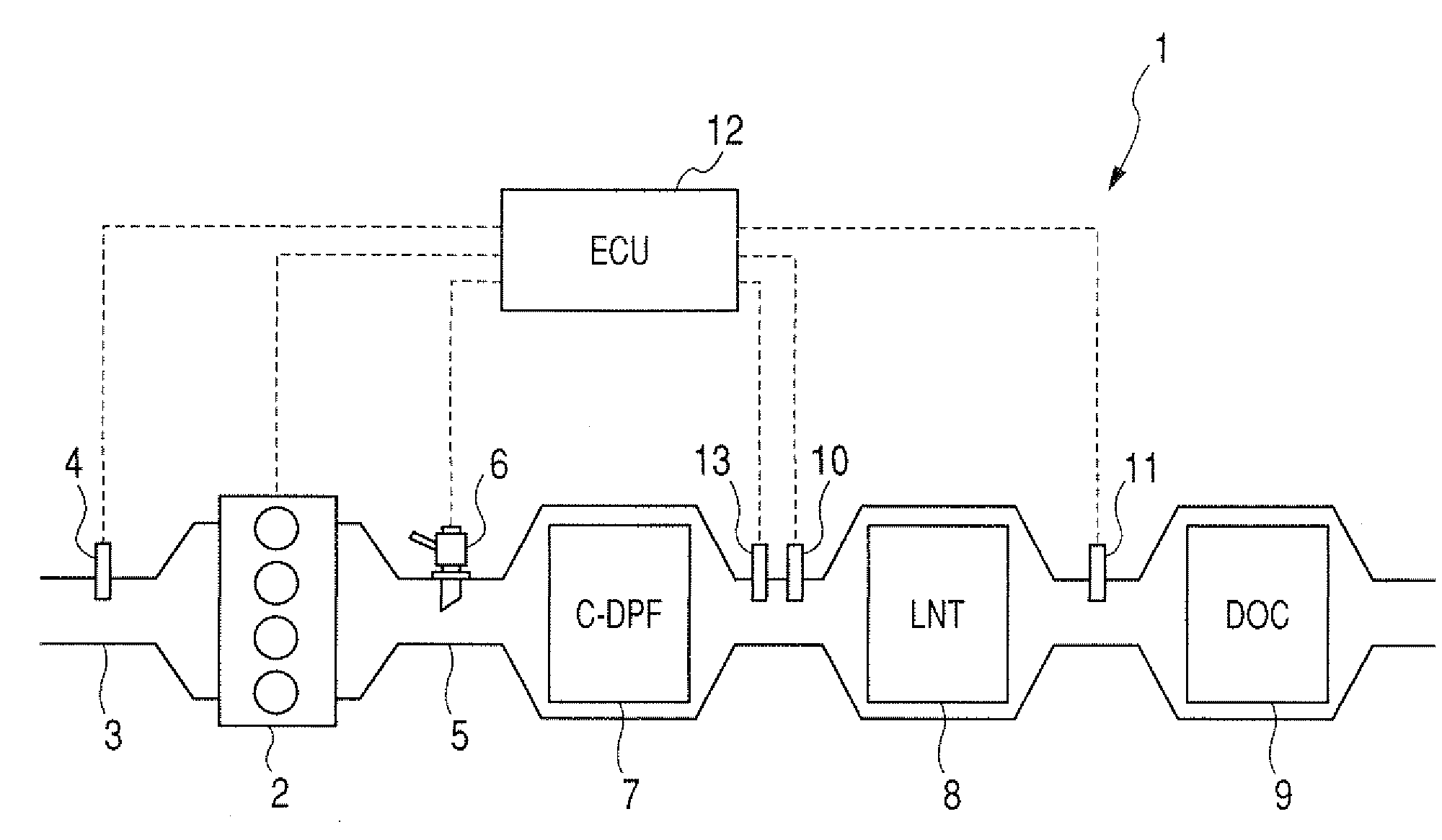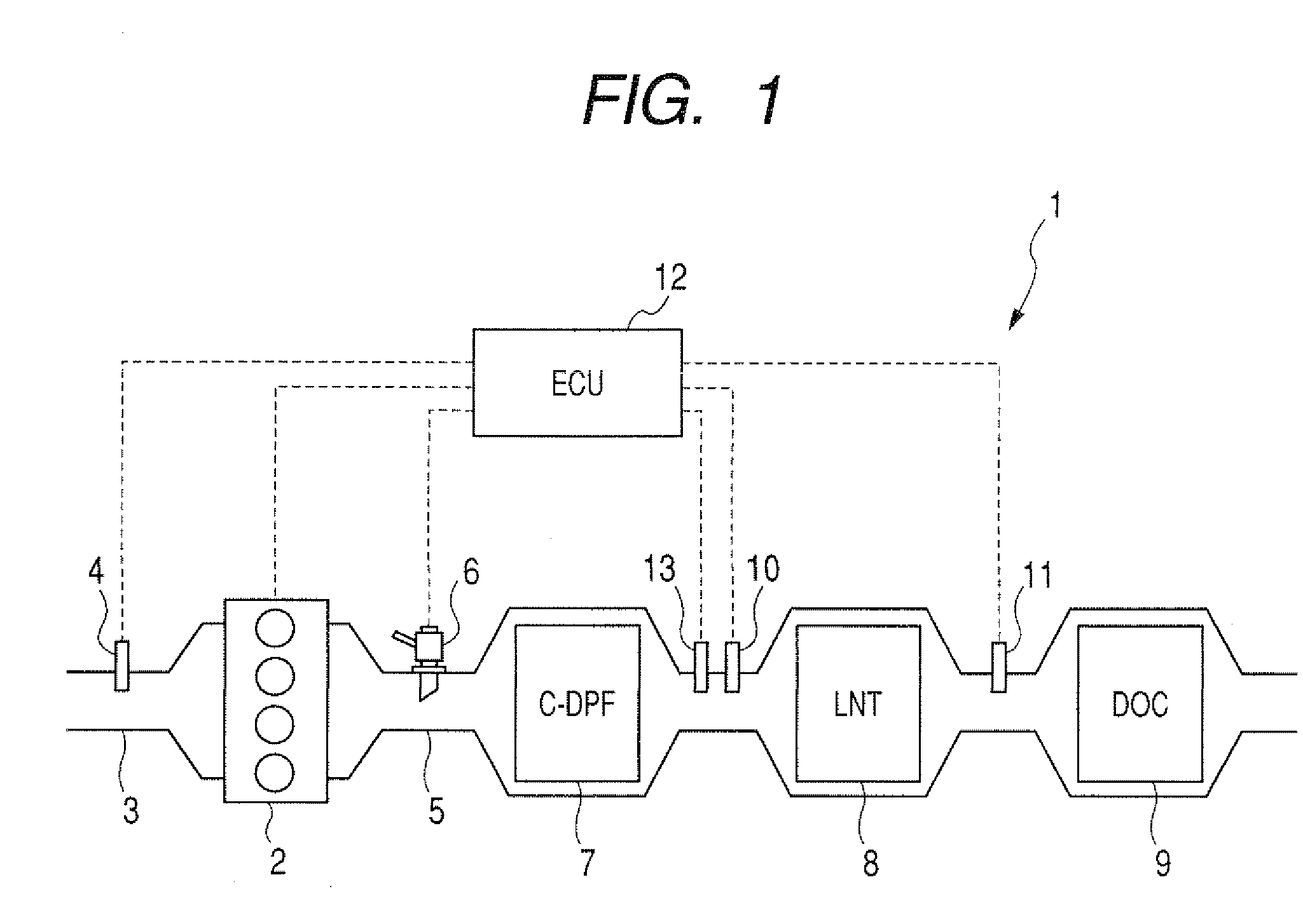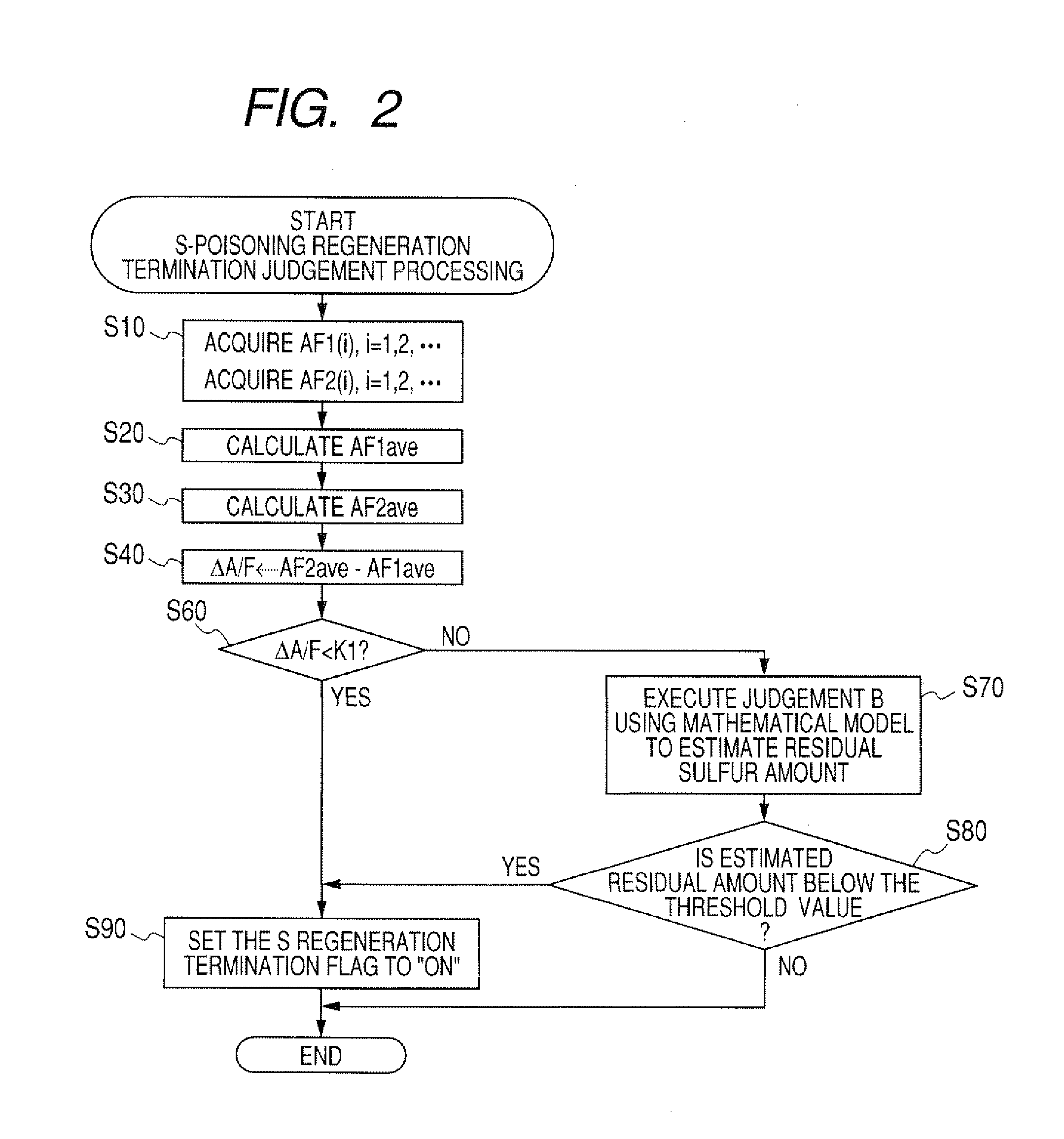ENGINE EXHAUST GAS PURIFICATION APPARATUS ENABLING ACCURATE JUDGEMENT OF APPROPRIATE TIME FOR TERMINATING NOx CATALYST REGENERATION PROCEDURE
a technology of exhaust gas purification and accurate judgement, applied in mechanical equipment, machines/engines, exhaust treatment, etc., can solve the problems of difficult to directly measure the volumetric rate, waste of fuel, sulfur poisoning, etc., and achieve the effect of accurate judgmen
- Summary
- Abstract
- Description
- Claims
- Application Information
AI Technical Summary
Benefits of technology
Problems solved by technology
Method used
Image
Examples
Embodiment Construction
[0042]FIG. 1 conceptually illustrates an exhaust system of an internal combustion engine, for use in describing an embodiment of an exhaust gas purification apparatus, designated by numeral 1.
[0043]The exhaust gas purification apparatus 1 operates with a 4-cylinder diesel engine 2 (referred to in the following simply as the engine), which receives a flow of intake air through an intake manifold 3. Exhaust gas from the engine 2 passes out via an exhaust passage 5 of the exhaust gas system. An ECU 12 performs overall control of the operation of the exhaust gas purification apparatus 1, in addition to controlling fuel injection for the engine 2. The intake manifold 3 has an air flow meter 4 installed, for measuring the air intake rate of the engine 2. The exhaust passage 5 is provided with a fuel addition valve 6) which is controlled by commands from the ECU 12 for adding fuel to the exhaust passage 5 (i.e., injecting a specific amount of fuel into the exhaust passage 5 at each of spec...
PUM
 Login to View More
Login to View More Abstract
Description
Claims
Application Information
 Login to View More
Login to View More - R&D
- Intellectual Property
- Life Sciences
- Materials
- Tech Scout
- Unparalleled Data Quality
- Higher Quality Content
- 60% Fewer Hallucinations
Browse by: Latest US Patents, China's latest patents, Technical Efficacy Thesaurus, Application Domain, Technology Topic, Popular Technical Reports.
© 2025 PatSnap. All rights reserved.Legal|Privacy policy|Modern Slavery Act Transparency Statement|Sitemap|About US| Contact US: help@patsnap.com



